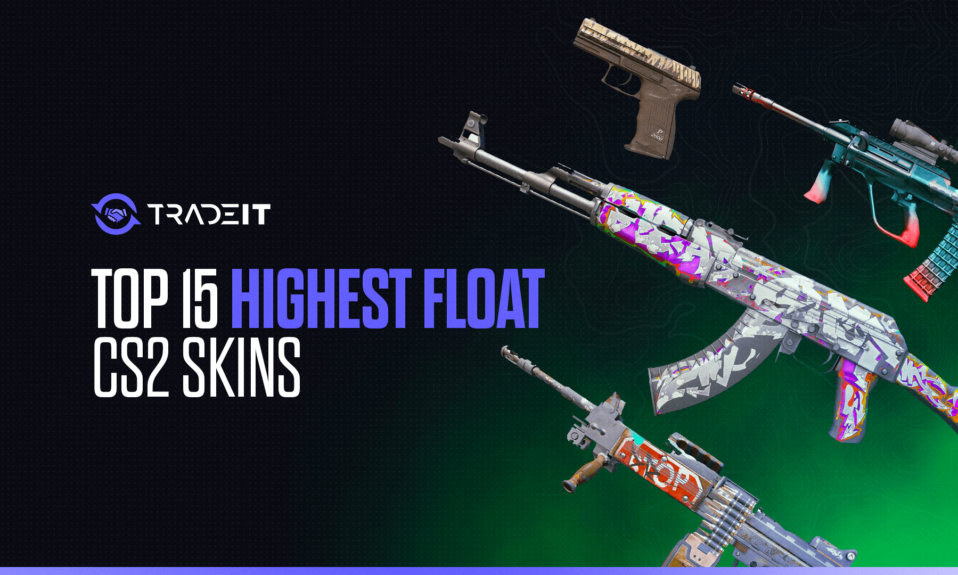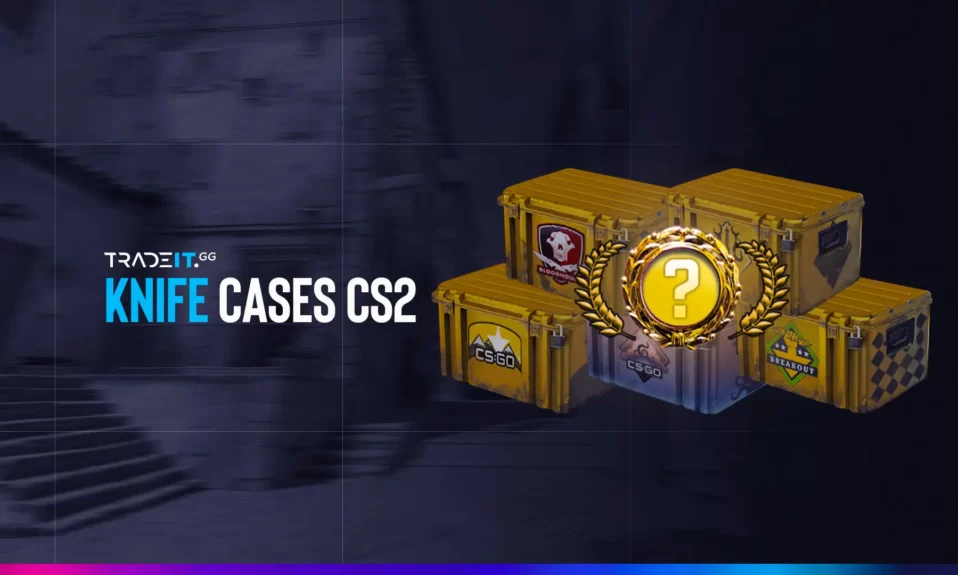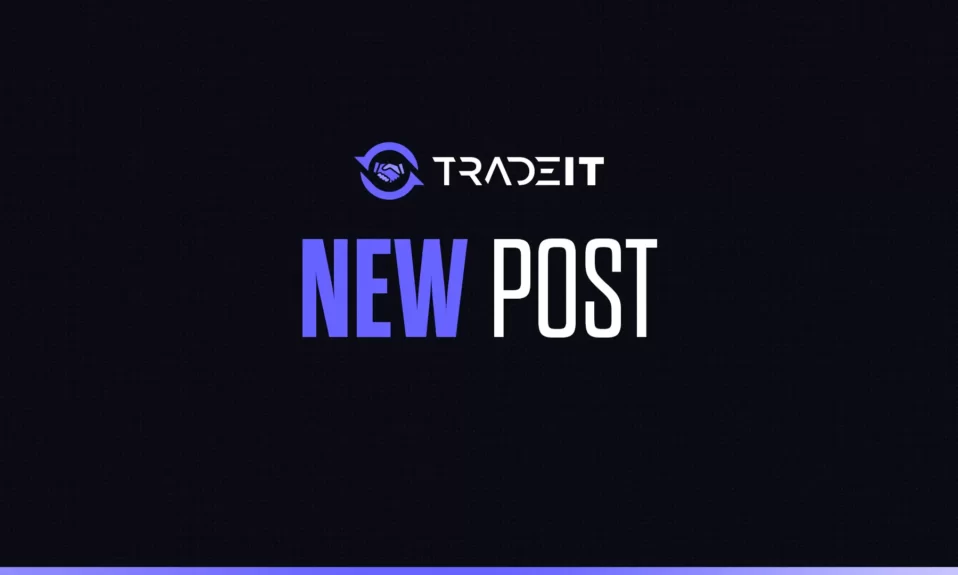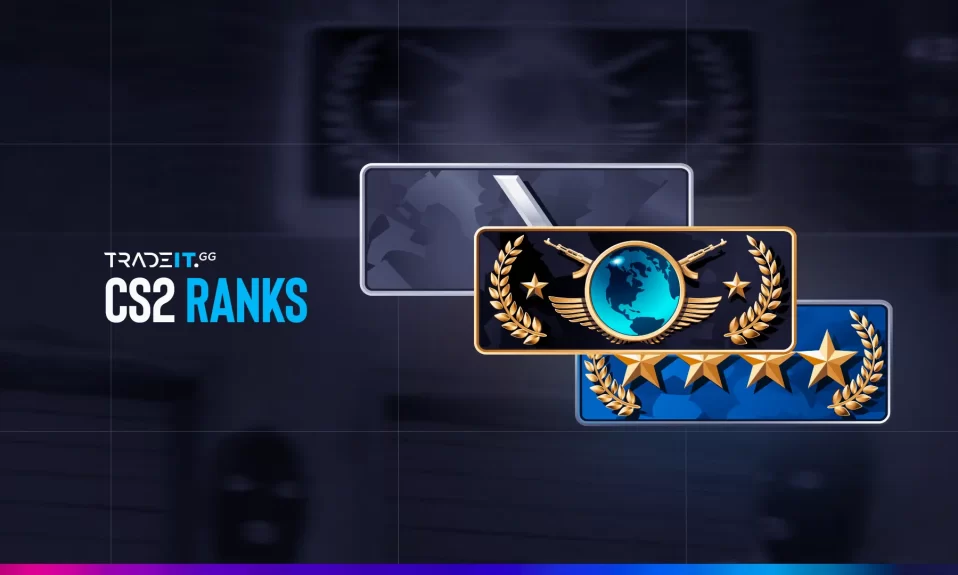
You’ve been grinding CS2 for weeks, maybe months. Your aim is improving, you know the callouts, but that CS2 rank icon next to your name refuses to budge. Sound familiar? You’re not alone in wondering how this ranking system actually works.
CS2’s ranking system in 2025 is more complex than ever, with two distinct ranking systems, map-specific ratings, and a color-coded Premier mode that’s left many players confused.
CS2’s Dual Ranking System
CS2 revolutionized Counter-Strike’s ranking approach by introducing two parallel systems that serve different purposes. Gone are the days of a single rank defining your entire skill level.
Now, you navigate between map-specific Competitive ranks and a numerical Premier rating.
CS2 Ranking Systems at a Glance
Toggle between systems to explore their unique characteristics
Map-Specific Ranks
18 traditional ranks per map
Individual Progress
Each map tracked separately
Global Elite Goal
Top 0.7% of players
Competitive Mode – The Map-Specific System
In Competitive mode, your rank isn’t universal. You might be a Legendary Eagle on Dust II where you’ve mastered every angle, but only a Gold Nova on Ancient where you’re still learning.
This system recognizes that map knowledge is crucial to Counter-Strike mastery.
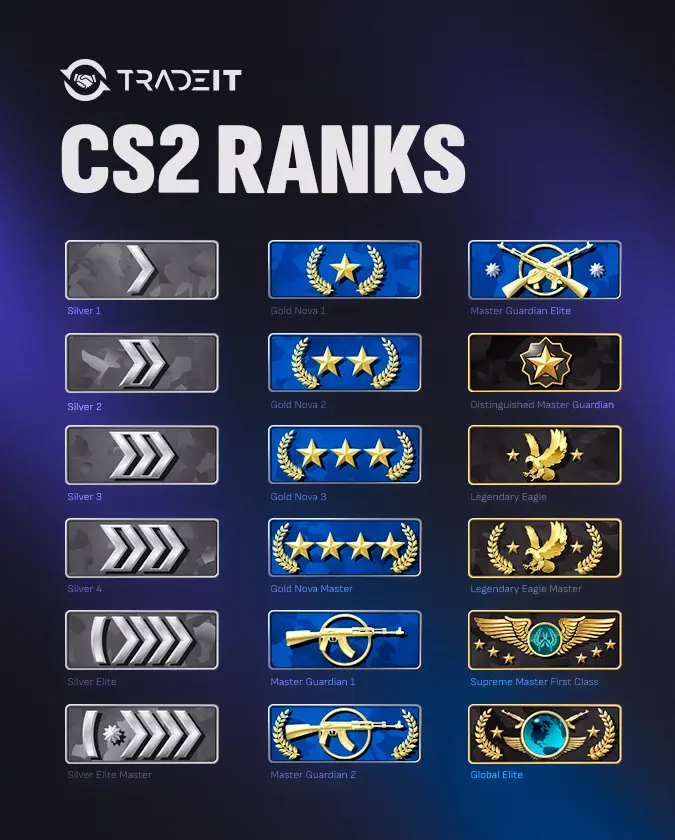
The 18 Competitive Ranks Explained
- Silver (6 ranks): Silver I through Silver Elite Master – The learning phase
- Gold Nova (4 ranks): Gold Nova I through Gold Nova Master – Average players
- Master Guardian (4 ranks): MG I through Distinguished Master Guardian – Above average
- Eagle (2 ranks): Legendary Eagle and Legendary Eagle Master – Skilled players
- Supreme (1 rank): Supreme Master First Class – Near-professional level
- Global Elite (1 rank): The pinnacle, representing top 0.7% of players
Premier Mode – The Unified Rating System
Premier mode abandons traditional ranks for a numerical rating system. Starting at 1,000, your rating fluctuates based on wins, losses, and individual performance. The color-coded tiers provide quick visual feedback on your skill level.
Premier Rating to Traditional Ranks
| Premier Rating | Color Tier | Equivalent CS:GO Ranks | Player Percentage |
|---|---|---|---|
| 1,000 – 4,999 | Gray | Silver I – Gold Nova I | 16.8% |
| 5,000 – 9,999 | Light Blue | Gold Nova II – Master Guardian I | 36.8% |
| 10,000 – 14,999 | Blue | Master Guardian II – Legendary Eagle | 31.2% |
| 15,000 – 19,999 | Purple | Legendary Eagle Master – SMFC | 12.0% |
| 20,000 – 24,999 | Pink | Supreme – Global Elite | 1.6% |
| 25,000 – 29,999 | Red | Upper Global Elite | <0.1% |
| 30,000+ | Yellow | Professional Level | <0.1% |
CS2 Rank Distribution in 2025
The distribution has shifted significantly since launch, with the average player now sitting around 8,904 Premier rating.
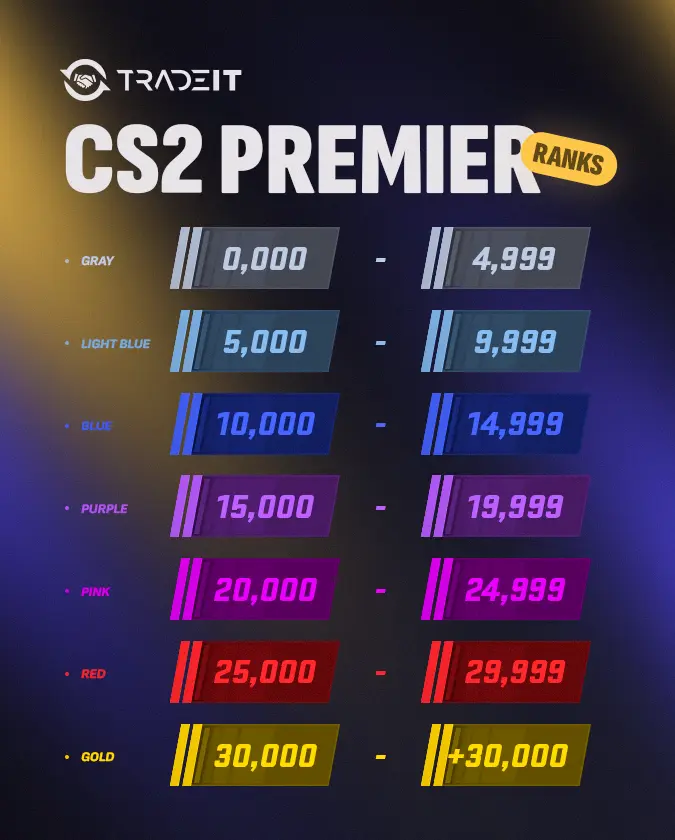
Live Premier Rating Distribution
Hover over bars to see exact percentages
What These Numbers Mean
- Below 5,000 (Gray): You’re in the bottom 17% – Focus on fundamentals
- 5,000-10,000 (Light Blue): Average player territory – 37% of the playerbase
- 10,000-15,000 (Blue): Above average – Top 50% of players
- 15,000-20,000 (Purple): Skilled minority – Top 15% of players
- 20,000+ (Pink/Red/Yellow): Elite territory – Less than 3% of all players
How to Actually Rank Up in CS2
Ranking up isn’t just about playing more matches. The system evaluates multiple factors, and understanding these can accelerate your climb significantly.
Understand the MMR System
Your visible rank is just the tip of the iceberg. Behind it lies your Matchmaking Rating (MMR), a hidden number that determines your actual skill level. Win streaks boost it rapidly, while inconsistent performance causes slower gains. Individual performance matters too: a 30-kill victory impacts MMR more than a carried win.
Master the Fundamentals
Before chasing rank, solidify your basics. Spend 30-60 minutes daily on aim training maps. Learn common angles on at least 3 maps thoroughly. Practice spray patterns until muscle memory takes over. These fundamentals create the foundation that higher-level tactics build upon.
Focus on Consistency
The ranking algorithm favors consistent performers over occasional heroes. Three 20-kill games beat one 40-kill game followed by two disasters. Maintain steady performance by warming up before competitive matches and avoiding tilt-induced loss streaks.
Optimize Your Environment
Technical factors matter more than you think. Use optimal CS2 settings for maximum FPS. Ensure your mouse sensitivity allows for precise adjustments. Communicate effectively with your team. These “soft” factors often separate similarly skilled players.
Advanced Training Techniques
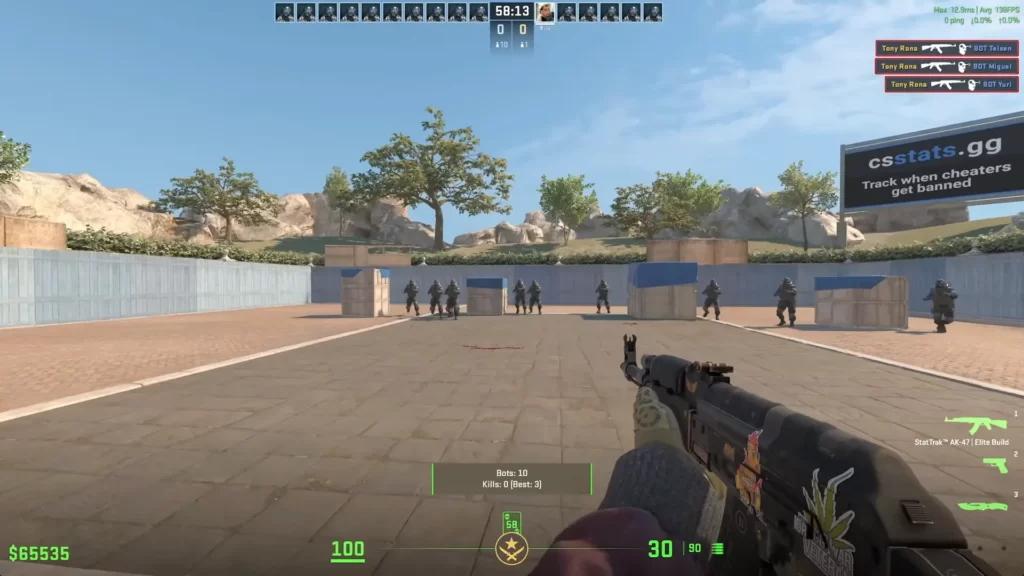
Top players don’t just play matches. They follow structured training routines that target specific weaknesses. Here’s what separates average players from those who consistently rank up:
Daily Training Routine for Ranking Up
- 5 minutes of aim_botz headshot practice
- 5 minutes of recoil control on Recoil Master
- 5 minutes of movement practice on kz_ maps
- 15 minutes of FFA Deathmatch (focus on crosshair placement)
- 15 minutes of Retake servers (practice site execution)
- Play 2-3 competitive matches maximum per session
- Review demos of losses to identify mistakes
- Take breaks between matches to avoid tilt
Team Dynamics and Communication
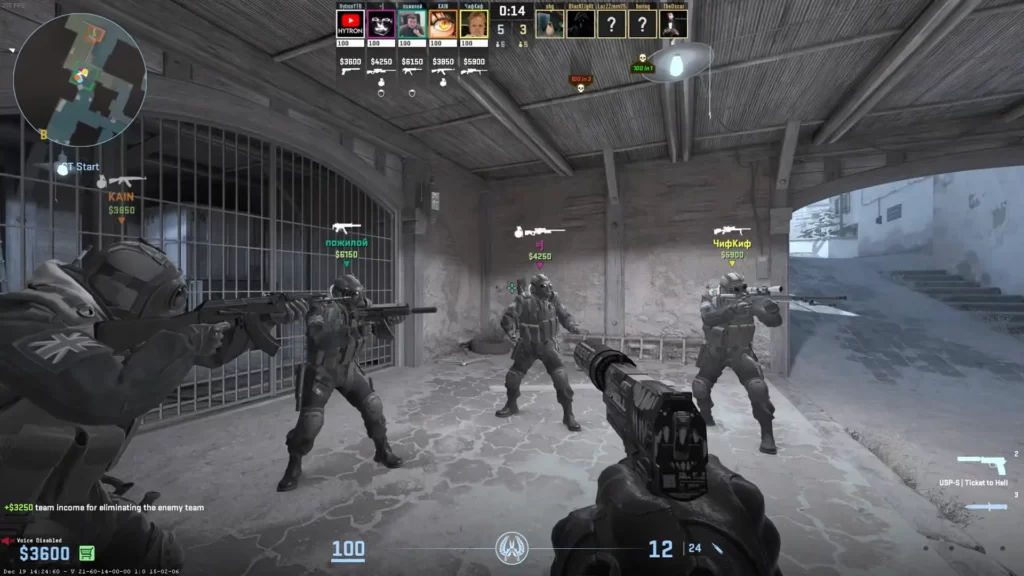
Solo queue warriors often plateau because they neglect the team aspect. CS2 rewards coordinated teams over individual fraggers. Even in solo queue, proper communication can turn losing games into victories.
CS2 Profile Ranks (XP System)
Beyond competitive rankings, CS2 maintains a separate progression system through Profile Ranks. These XP-based levels reflect time invested rather than skill, serving as a gateway to various game features.
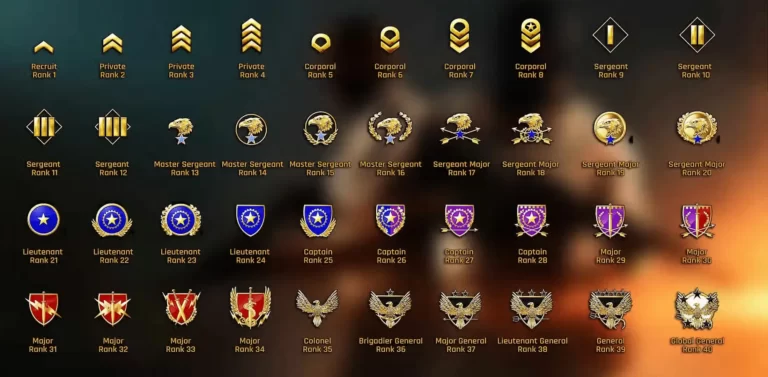
Profile Ranks Explained
- Earn XP from Casual, Deathmatch, Competitive, and other modes
- Reaching Rank 40 unlocks the option to reset for a Service Medal
- Service Medals display your dedication with yearly designs
- Required minimum rank to access Competitive matchmaking
All CS2 Competitive Ranks Detailed
Each rank represents a distinct skill level with its own challenges and characteristics. Understanding what defines each tier helps set appropriate goals for improvement.
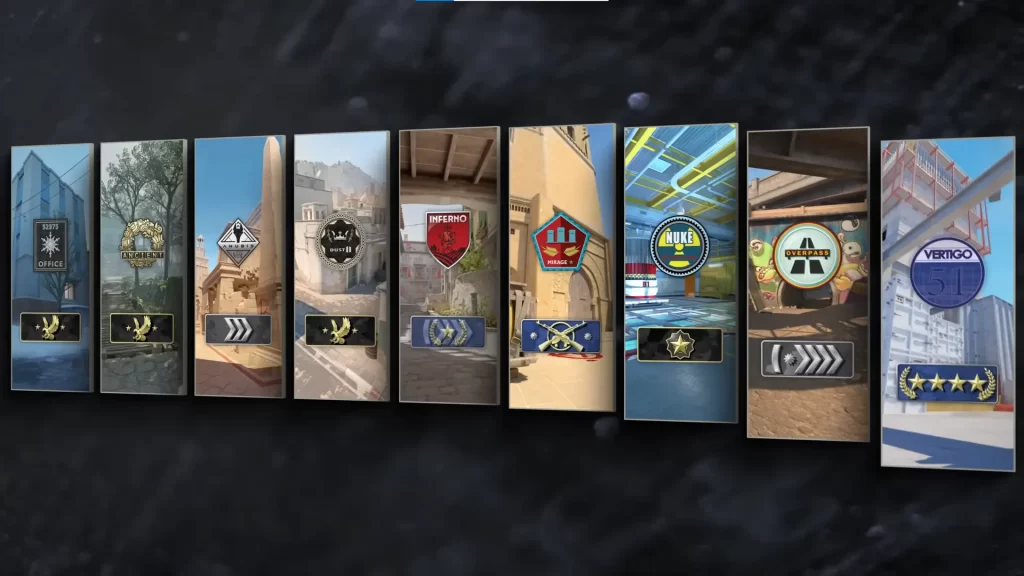
Rank Progression Breakdown
| Rank Tier | Skill Characteristics | Common Weaknesses | Focus Areas |
|---|---|---|---|
| Silver I-IV | Learning basics, inconsistent aim | Poor crosshair placement, no game sense | Aim training, basic map knowledge |
| Silver Elite – SEM | Improving mechanics, some tactics | Inconsistent spray control, poor economy | Spray patterns, basic strategies |
| Gold Nova I-III | Average players, decent fundamentals | Limited utility usage, positioning errors | Grenade usage, angle holding |
| Gold Nova Master | Solid aim, understanding of economy | Predictable playstyle, weak teamwork | Team coordination, adaptability |
| Master Guardian I-II | Good mechanics, map knowledge | Overthinking, inconsistent performance | Consistency, advanced tactics |
| MGE – DMG | Strong fundamentals, team-oriented | Tilt management, clutch situations | Mental game, leadership |
| Legendary Eagle | Excellent aim, tactical understanding | Minor positioning errors cost rounds | Perfecting timings, advanced nades |
| LEM – Supreme | Near-professional mechanics | Consistency under pressure | Mental fortitude, team chemistry |
| Global Elite | Top 0.7%, complete players | Maintaining peak performance | Meta adaptation, innovation |
Premier Mode Strategy Guide
Premier mode introduces unique challenges with its map veto system and unified rating. Success requires adapting your approach compared to standard Competitive matches.
Master the Veto Process
Unlike Competitive’s map selection, Premier uses a pick/ban system. Develop competence on at least 5 maps to avoid being forced onto your weakest terrain. Teams alternate bans until one map remains.
Rating Gains and Losses
Expect to gain/lose 100-400 rating per match. Factors include opponent ratings, individual performance, and round differential. Stomps yield more rating change than close games.
Stack Restrictions
You cannot queue as a 4-stack in Premier to protect solo players from coordinated kicks. Stick to 2, 3, or 5-player parties for Premier matches.
The Path Forward
CS2’s ranking systems is just the beginning. Whether you’re grinding map-specific Competitive ranks or chasing that yellow Premier rating, success comes from consistent improvement and smart practice.
The dual ranking system gives everyone a path to progress. Struggling on Mirage? Focus on Inferno where you excel. Premier rating stagnating? Switch to Competitive and master new maps. This flexibility keeps the grind fresh and rewarding.
Continue Your CS2 Journey
- Perfect your setup with the best CS2 settings guide
- Unlock Premier mode faster with this quick guide
- Track your progress with the live rank distribution data
- Explore Wingman ranks for 2v2 competition
- Browse the complete CS2 skins collection
Frequently Asked Questions
CS2 features 18 competitive ranks from Silver I to Global Elite, divided into six tiers: Silver (6 ranks), Gold Nova (4 ranks), Master Guardian (4 ranks), Legendary Eagle (2 ranks), Supreme Master First Class (1 rank), and Global Elite (1 rank). Additionally, Premier mode uses a numerical rating system from 1,000 to 30,000+ with seven color-coded tiers.
Premier mode uses a numerical rating starting at 1,000. You gain or lose rating based on match results, individual performance, and opponent strength. Ratings are color-coded: Gray (1,000–4,999), Light Blue (5,000–9,999), Blue (10,000–14,999), Purple (15,000–19,999), Pink (20,000–24,999), Red (25,000–29,999), and Yellow (30,000+).
The average CS2 Premier rating is approximately 8,904, which falls in the Light Blue tier. In traditional ranks, this equates to Gold Nova III to Gold Nova Master. About 50 % of players are below this rating, making it the true middle ground of the skill distribution.
Yes, you can lose your rank through inactivity. If you don’t play a competitive match for 30 days, your rank begins to decay. You’ll need to win one match to display your rank again, though you’ll likely be placed slightly lower than before. Consistent losses can also demote you to lower ranks.
Competitive mode assigns separate ranks for each map (you can be Silver on Dust II but Gold Nova on Mirage). Premier mode uses one universal rating across all maps with a pick/ban system for map selection. Premier also has seasonal resets and leaderboards, while Competitive ranks are permanent per map.
You need 10 competitive wins to receive your initial rank in CS2. These placement matches analyze your performance, including K/D ratio, MVPs, and round impact. In Premier mode, you’ll receive a starting rating after these 10 matches, typically between 1,000 – 15,000 depending on performance.
Global Elite represents approximately 0.7 % of the CS2 player base. In Premier mode terms, this equals ratings above 20,000, with only about 1.6 % of players reaching the Pink tier (20,000–24,999) and fewer than 0.1 % achieving Red (25,000+) or Yellow (30,000+) ratings.
No, 4-stacking is disabled in CS2 Premier mode to protect solo players from potential vote-kick abuse. You can queue with 2, 3, or 5 players in Premier. However, 4-stacking is allowed in regular Competitive mode and other casual game modes.


